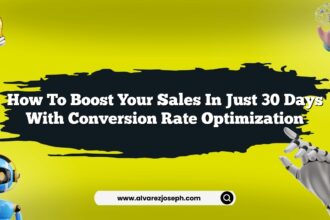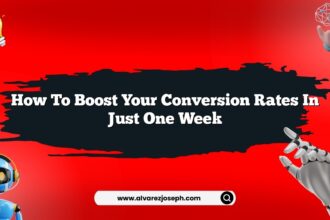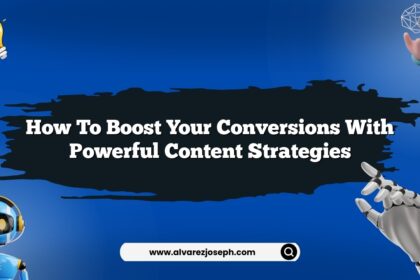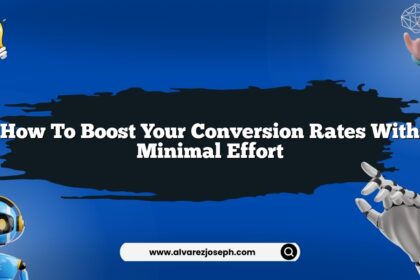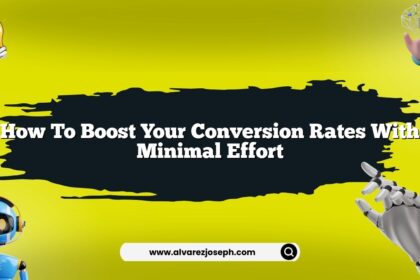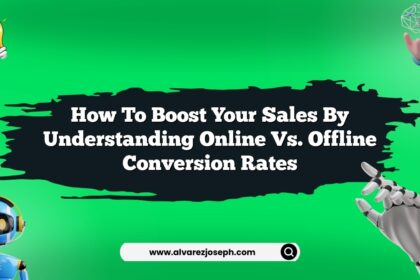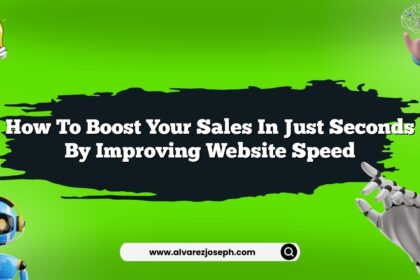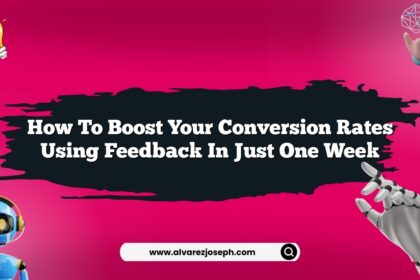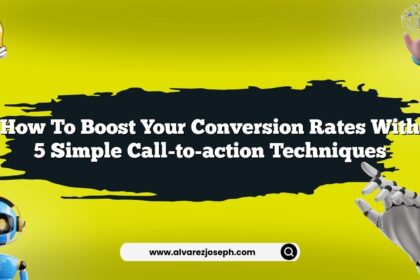Want to boost your conversion rates in just 30 days? Sounds like a gimmick, right? But honestly, it’s totally doable. You can see tangible changes without needing to hire a fancy agency or spend a fortune on ads. What’s the catch? Well, you’ve got to roll up your sleeves and get ready to dig in.
I’m not talking about some cookie-cutter approach either. It’s all about understanding your audience, tweaking your strategies, and testing, testing, testing… Trust me, if you put your mind to it, you can see a difference. So, let’s dive in.
Understand Your Audience
First off, let’s talk about understanding your audience. I mean really understanding them. Not just their age or gender but their behavior, preferences, and what makes them tick.
- Are they impulse buyers?
- Do they read reviews before making a purchase?
- What pain points do they have that your product can solve?
Here’s the kicker: the more you know about your audience, the better you can tailor your messaging. This isn’t just a fluffy marketing tip. It’s the backbone of your entire strategy. More often than not, businesses skip this part, and that’s where they mess up.
Use Analytics
Get cozy with analytics. Google Analytics, Facebook Insights, whatever it is, dive deep into the data. Look for patterns. You might discover that a certain demographic is super engaged on your site, while another group bounces off like they’ve been shot out of a cannon.
This is the kind of stuff that helps you tweak your approach. If you find that younger users love your product but tend to drop out at checkout, maybe it’s time to simplify that process.
Optimize Your Website
Next up, let’s chat about your website. If your site is slow or hard to navigate, you’re practically inviting your potential customers to walk away. I mean, come on. Who’s got time to wait for a page to load?
- Speed it up! Use tools like GTmetrix or Google PageSpeed Insights to see where you can improve.
- Make it mobile-friendly. If your site isn’t optimized for mobile, you might as well be closing the door in customers’ faces.
Streamline the User Experience
And speaking of navigation… Make it easy! A cluttered site can confuse visitors. Keep it simple. Use clear calls to action (CTAs) that guide users where you want them to go.
I’ve seen sites that bury the "Add to Cart" button like it’s a hidden treasure. Why? Make it obvious!
A/B Testing: The Secret Sauce
Now, let’s get into the fun stuff—A/B testing. This is where you can really see what works and what doesn’t.
- Pick an element to test. It could be anything from headlines, colors, CTAs, or even images.
- Create two versions. Let’s say you want to test a red button vs. a green button.
- Analyze the results. Look at which one gets more clicks and conversions.
Don’t be afraid to fail. You’ll learn more from what didn’t work than what did.
Create a Testing Schedule
Now that you’re ready to test, create a schedule. I recommend you test one thing at a time. If you try to change too many elements at once, you’ll end up confused when the results come in.
Keep it organized. Document everything. This way, you can refer back to what worked in the past. You might even find a gem among your failures!
Content is Key
Let’s not kid ourselves—content matters. You have to create content that resonates with your audience. But here’s the catch: it’s not just about cranking out blog posts.
- Use storytelling. People connect with stories. Share your brand’s journey or customer success stories.
- Leverage SEO. Use keywords that your audience is searching for. Don’t go overboard but sprinkle them naturally.
Mix Up Your Content
And don’t shy away from mixing it up! Videos, infographics, podcasts—these are all fantastic ways to engage your audience. Remember, not everyone consumes content the same way. Find what works for your audience and go all in.
Email Marketing: The Oldie but Goodie
Next, let’s talk about email marketing. This isn’t dead, folks! It’s still one of the most effective ways to boost conversions.
- Segment your lists. Don’t just blast out the same message to everyone. Tailor your messages based on user behavior.
- Nurture leads. Send follow-up emails, offer personalized recommendations, and don’t forget to include compelling CTAs.
Create Compelling Subject Lines
Your subject line is the first impression. Make it good! Use curiosity, urgency, or even humor to get them to click.
If you’re not getting opens, your subject lines might be the problem. Test different approaches and see what resonates.
Social Proof: Let Customers Speak
Here’s something a lot of people overlook: social proof. Reviews, testimonials, case studies—these can significantly boost your credibility.
- Collect reviews. Encourage your customers to leave reviews. You can even incentivize them with discounts for doing so.
- Showcase testimonials. Display positive feedback on your website. Nothing beats the power of someone else vouching for your product.
Leverage User-Generated Content
Don’t forget user-generated content! Encourage your customers to share their experiences on social media. This creates a community around your brand and gives potential customers a glimpse into real-life usage.
Utilize Retargeting Ads
Retargeting ads are like that friend who keeps reminding you about that awesome concert you wanted to attend. They serve up ads to people who have already visited your site.
This can be a game-changer. You’re not trying to reach new people, but instead, you’re nudging those who are already familiar with your brand.
Create Eye-Catching Ads
Make sure your retargeting ads are eye-catching. Use bold images and compelling messaging that reminds them why they were interested in the first place.
Monitor and Adjust
Once you’ve implemented these strategies, don’t just sit back and relax. Keep monitoring your analytics.
Check your conversion rates, user engagement, and bounce rates. Use this data to make informed decisions.
Be Ready to Pivot
If something isn’t working, be ready to pivot. Don’t hang on to a strategy that’s just not cutting it.
Adapt and evolve as needed. Your audience’s needs may change, and you want to be ahead of the curve.
Quick Summary
- Understand your audience’s behavior and preferences.
- Optimize your website for speed and navigation.
- Implement A/B testing regularly.
- Create engaging and relevant content.
- Use email marketing effectively by segmenting your audience.
- Leverage social proof to build credibility.
- Utilize retargeting ads to bring back potential customers.
- Monitor your analytics for ongoing adjustments.
- Be ready to pivot when necessary.
- Keep learning and evolving your strategies.
Frequently Asked Questions
What’s the best way to understand my audience?
Start with analytics. Dive into data and see what behaviors your customers exhibit. Surveys and feedback forms can also give you insights into their preferences.
How often should I run A/B tests?
Ideally, run A/B tests continuously. Test one element at a time and track results to refine your strategies.
Is social proof really that important?
Absolutely! Social proof builds trust and can significantly influence purchasing decisions. Positive reviews and testimonials can be the difference between a sale and a miss.
Can I improve my conversion rates without spending money?
Definitely! Many strategies, like optimizing your website or improving your content, don’t require a budget. It’s about time and effort.
What’s the most effective form of content?
It varies by audience. Some prefer videos, while others like blog posts. Test different formats to see what resonates best with your audience.
How can I encourage customers to leave reviews?
Make it easy for them! Send follow-up emails after a purchase, and offer incentives like discounts for providing feedback.
So there you have it! If you stick to these tips for 30 days, you’ll be amazed at the difference in your conversion rates. Just take it one step at a time, and remember to keep testing. You got this!


